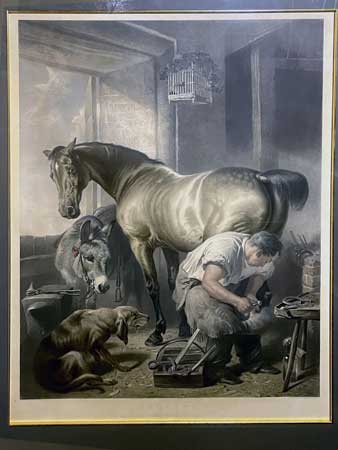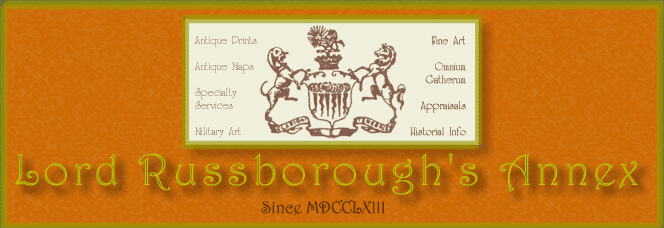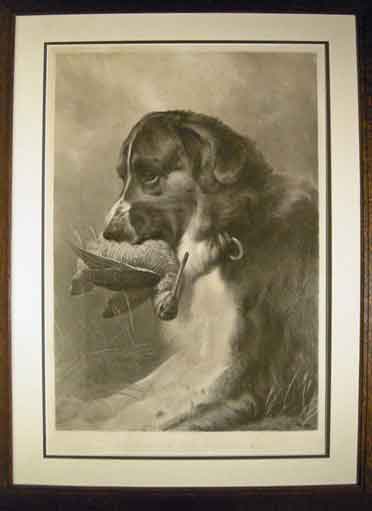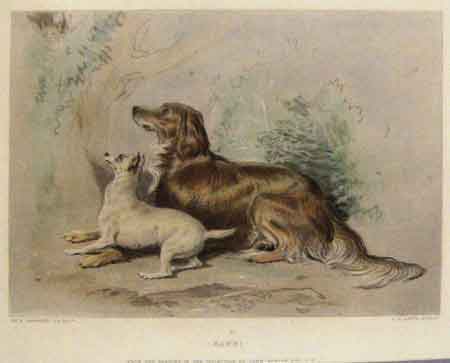
Charles G. Lewis after Edwin Landseer RA.
SHOEING
Imprint: London May 1st. 1848 F.G. Moon, Her Majesty's publisher. J.C. Grundy, Manchester & R.H. Grundy, Liverpool.
32 3/4 x 23 3/4" (83.2 x 60.3 cm) including letters. Delicately hand tinted copper mixed media engraving, printed by la Chine collé method. Matted to museum standard, with gilt wood fillet, glazed, heavy acanthus leaf wood frame. 46 10/16 x 33"
Ref AP1 (208) / GLN/ s.anar>DRNN PRICE CODE E SOLD
After the original painting by Edwin Landseer R.A. Shoeing the Bay Mare 1844 Tate Gallery, London. which was commissioned by Landseer's friend Jacob Bell, owner of the Bay Mare. it was exhibited at the Royal Academy in 1844 some years before its famous author received knighthood. The painting earned Landseer the Gold Medal at the 1855 Paris Exhibition and was bequeathed to the South Kensington Museum by Bell in 1859.
Inside a forge a leather aproned young blacksmith/ farrier concentrates on nailing a shoe onto an inquisitive bay mare horse named 'Old Betty', he is surrounded by detailed depictions of the tools of his trade, testimony to the care, which every subject, treated by Sir Edward Landseer was studied, nothing is forgotten necessary to a smith's business, and the one ornament on the wall of the forge, the wooden birdcage, decked with green, which contains a pet crow or blackbird, is suggestive of the rough man’s love for dumb creatures, and increases his resemblance to the hero of the ‘village smithy’ of the poem by Longfellow. The wrinkling of the mare’s leg under the pressure of the farrier’s shoulder, the quivering of the knees, the tension of the hooves of the fore feet, the swelling of the veins of the face, the extension of the nostrils; in contrast, mark how true to nature are the rough coat, the short neck and the erect ears of the beautifully rendered, listening donkey 'Poppy' (aptly supporting a poppy on her bridal), as she stands passively to the left by the door. She gently sniffs the scent of the hound in the foreground. How entirely ‘Laura’s’ attitude expresses a bloodhounds propensity to test everything by ‘sent’ whilst contentedly gnawing of a slice of hoof horn many of which litter the floor.
This sensitively rendered scene shows just how outstanding Edwin Landseer (1802 - 1872) was as an animal painter, indeed he was one of the most famous animal painters in British art history. A child prodigy, he was studying anatomy from an early age by age eleven he won the Society of Arts' silver medal for animal painting. He entered the Royal Academy schools at 14, by 1826 was elected an ARA. and RA in 1831. He was knighted in 1850. He was patronized by the Royal Family and many of his works are in the Royal Collection. He was also commissioned to sculpt the lions that surround Nelson's Column in Trafalgar square, London.





